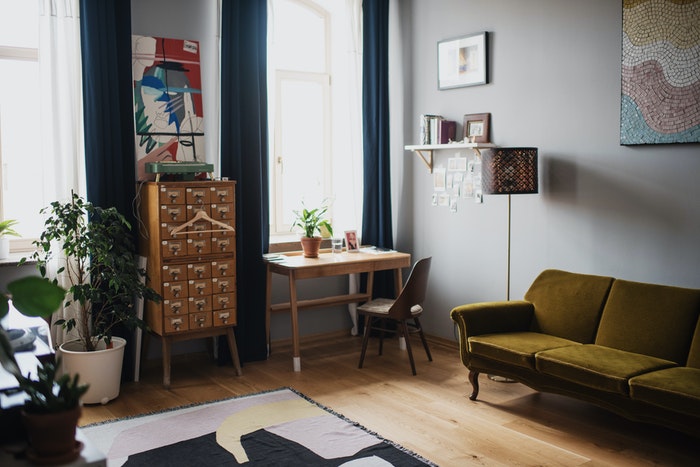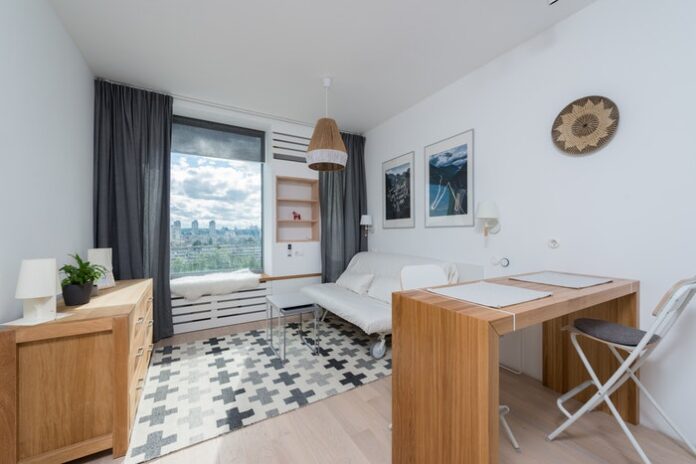Entrepreneurs deserve to have a workspace that’s designed for productivity and set up to make collaboration easy, even when miles apart from team members. However, right now, there seems to be room for improvement, as many of those operating from home offices are feeling dissatisfied with their work environments, especially over the past year.
A new Kelton Global Research Study commissioned by National Business Furniture of over 1,000 Americans finds that nearly half of those working from home are feeling more stressed and isolated and finding it harder to find a healthy work-life balance.
Here are four ways that home business owners and their teams can make some positive changes in the months to come.
Decorate for Success
Don’t underestimate the impact that your surroundings have on your mind, body, and soul. Based on survey results, two in three (67%) employed Americans are frustrated with at least one aspect of their workspace. While everybody may have their unique grievances, there are several flexible cost-effective options for improving your physical workspace:
Time for a Refresh
If you set up your workspace during the pandemic, you might be due for an overhaul. Given what you’ve learned in the past many months, what could be improved? Is there a more desirable location in your house? Would turning your desk to a new angle help? Would one new piece of furniture be a game changer? Even if you’re perfectly okay with your setup, change can bring a whole new perspective to your workday.
The Power of Paint
An inexpensive and cheerful way to transform a space starts with the walls. The freedom of a home office totally releases you from the uniform requirements of a corporate or shared office, so find what works best for you.
- Need a never-ending pick-me-up? Invigorating, energetic colors can inspire a morale boost or productivity surge. Just make sure you don’t pick a palette that’s too overwhelming.
- If you’re already high-energy or often stressed, go with a pastel shade that works for you. Pastels open up the space and provide a sense of calm and serenity without creating a drab environment.
- Dark colors aren’t all bad! A brooding palette can make you feel serious, assiduous, and confident, especially when paired with bold furniture.
- Avoid triggering colors, including green, which can make you feel a bit ill. Red is often connected to anger or fear, which can be overwhelming during the workday.
- Take a page from multiple strategies and use an accent wall, especially if you’re in a smaller space that can’t go too over-the-top.
- Be considerate of your lighting, including the amount of natural light and hues of your chosen lightbulbs. Pair cool with cool and warm with warm, when possible.
Décor and More
If paint is the foundation of your design, art and décor naturally follows. Find a theme that fits with your color scheme, but don’t get too “matchy-matchy.” Coordinating colors are ideal, especially pairing light with dark. Balance is key.
DIY It!
Have a little fun while you’re outfitting your space. There are a lot of ways to upcycle or improve on basic office supplies that can be found in inexpensive and unexpected places. A little bit of paint, washi tape, permanent marker, or mod podge can go a long way (and make for a fun craft day).
Find a Peaceful Place
It’s all about location, location, location! Where you settle down within your home office is a driver of workday happiness, but this is easier said than done. At this point, 29% of workers feel fatigued by using parts of their home as a workspace. An equally important 22% have had trouble finding peace and quiet within their own homes for what comes down to a variety of reasons.
Start by exhausting the options and limitations of your floorplan. It’s often rare to find a dedicated room for a home office — one that doesn’t do double-duty with a guest bedroom, play space, or otherwise. But it’s not impossible to find something more satisfying than the kitchen table. Those who have spent the past many months working from home aren’t exempt from this step. There might be something better, but it takes time and introspection to think critically about one’s surroundings.
Perhaps there just isn’t a better option than where you’ve created your main workspace. While you may not be able to permanently set up shop in a different part of the home, consider planning out a solitary area that can be used on a short term (we’re talking a few hours here and there) basis. A simple folding table and closed door can work wonders for meetings or during a stressful moment where you need a little room to breathe.
Connect with Coworkers
A staggering 40% are starting to feel lonely or isolated in their work from home situation. We found that the most senior (52% of Boomers) and those new to the workforce (43% of Gen Z) feel this way. In the middle, 1/3 of Millennials and Gen Xers round out this statistic.
Creating a connection over the internet is hard. While some adapt quickly, others need to find workarounds that can build the same in-office camaraderie over remote channels:
Step Up Your Setup
In-person conversation doesn’t have lag, interrupted audio, patchy video, and other common IT nightmares. Make sure your home setup is optimized to keep these interactions easy and organic. Invest in a high-quality webcam that outperforms your laptop’s built-in option and mount it at a straight-on or slightly elevated angle to get as close to direct eye contact as possible. Likewise, a good external microphone alleviates the static of headphone-integrated mics, making it sound as if you’re both in the same room. Naturally, we recommend that you optimize your end of the conversation: clear monitors and speakers are just as important for your own workplace wellness.

Let’s Do Lunch?
Once you’ve optimized your connection, schedule a lunch hour call or video chat with a coworker. Don’t worry about work for a little while; remote work already removes the joy of gathering around the proverbial “water cooler” or catching up in the breakroom. Bring back some of that happiness by maintaining meaningful connections with people you enjoy working with.
Be the Best “You”
Working on yourself improves every aspect of your life. If you feel good in general, you’ll feel good while you’re working. Let’s define a few of the best ways to be your best self:
Self-Care
“Be kind to yourself so you can be kind to others”
The most basic tenet of wellness starts with self-care. Its name seems self-explanatory but exploring the best solutions for you can take some introspection. What makes you happy? Is it a cup of coffee at the start of your day? Investing in a pleasant bottle of lotion to keep your skin feeling nourished? Taking a quick moment to decompress midday by talking to a loved one, working on a personal task, or doing nothing at all? Bringing nature into your home office with a plant or taking time outside for a breath of fresh air? Whatever it may be, find something blissful and don’t be afraid to work it into your life, both in and outside of working hours.
Mindfulness
“Listening to yourself and the world around you”
Practicing mindfulness sounds daunting but, in the end, it’s as easy and manageable as you want it to be. It’s like taking self-care to the next level. Essentially, life is like a snow globe; if you focus on one snowflake, you’ll find that the rest of them have time to settle down. There’s no right or wrong way to go about it, but some popular methods include meditation, breathing exercises, yoga, or finding guided apps on your phone. It’s not an all or nothing practice, so even if you only have time for thirty seconds of mindfulness practice, it’s always better than nothing. Everybody starts somewhere.
Boundaries
“What you allow is what will continue”
Healthy boundaries manifest in all shapes and sizes but they always circle back to what is best for you. At the same time, they’re only as good as how stridently you enforce them. As you discover what your limits are, ensure that they’re clear, well-communicated, and managed as best as possible. Start with determining what hours and methods of communication you’ll allow during the day and remember that it’s okay to stay within common worktimes. From there, make sure that you have your calendar start/stop times set, notifications muted, and calls forwarded to voicemail during your “off” hours. Ensure that your managers, reports, and colleagues are aware of your boundaries and make sure that anything urgent can be passed on to the right person. Most importantly, don’t back down. After all, it still comes down to our definition: what you allow is going to continue.
—
There’s no limit to how far you can take your own workplace wellness. More importantly, you only need to work on what you can manage; the more work you do, the rest of it will become easier. Everything from where you work to the way you go about it matters. Now is the perfect time to make your workspace work for you.
Download this free eBook on workplace wellness that features more exciting tips and tricks to improving your workday in every way.
Find a Home-Based Business to Start-Up >>> Hundreds of Business Listings.
















































